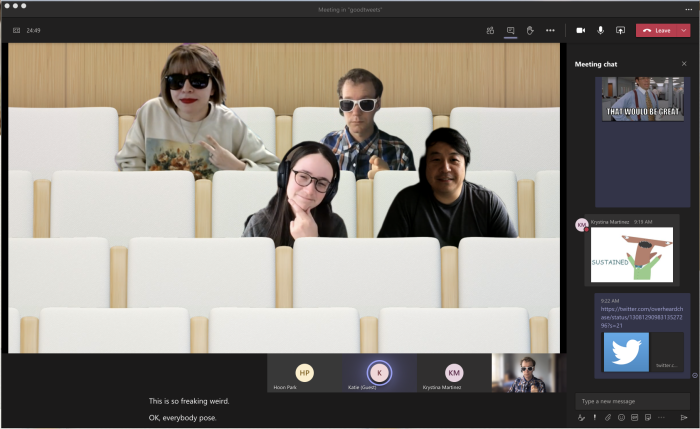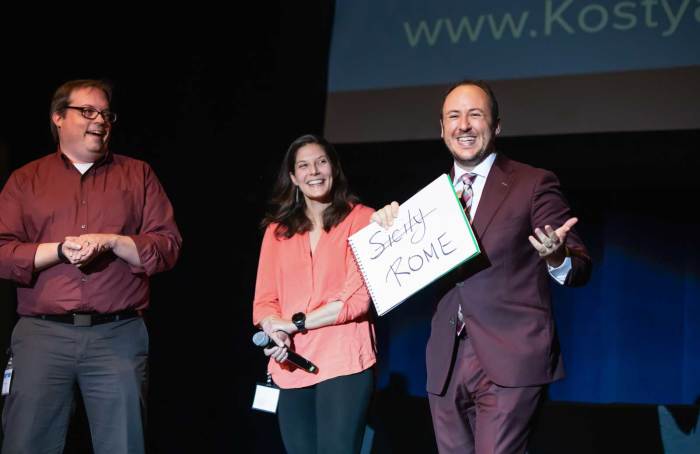As a business speaker and magician, engaging audiences is what I do. In the past, that always meant crowds. Smiles. Gasps. “Wow” and “aha” moments—in person, of course.
Then I had my own “aha” moment. After 20 years of doing something one way, I had to rethink how my speaking and training programs could be just as engaging and exciting from my home office. The result? I had my best year in business, ever.
As I teach in my virtual sales and leadership training for remote teams, to lead in a remote environment, you have to understand your own cognitive biases, the shortcuts your mind takes to manage the overwhelming amount of information you navigate every day. Here are the five cognitive biases I suggest you tackle head first as remote and hybrid work become the new normal.
1. Proximity / distance bias
Our brains want to feel in control, and physical proximity is one way we can have that control. So even though we have the tools to bridge any virtual distance, it’s still a natural tendency to give preferential treatment to those in arm’s reach, or at least a few desks down.
As a leader working to make all your team members develop and grow, you need to be careful that you aren’t falling into this all-too-human trap, especially if you work in a hybrid environment where some workers are in the office and others aren’t.
To overcome this bias, try to replicate that physical proximity remotely:
You might even use one of those settings on your video conferencing tool that makes it look like you’re all in one room. Or use audio channels in your team chat app to recreate the feeling of all being in one space.

2. Similarity bias
Similarity bias draws us to people who are like us, causing us to miss out on new, diverse relationships at work. It can even lead us to hire, promote, or offer more career development to people we can see ourselves in. Not good.
We need to go out of our way to feel connected to everyone, not just people like us. My suggestion: create shared experiences.
Seeing great magic is an emotional experience, and it’s also a shared experience. As a magician for over 20 years, a big part of my performances was creating those shared experiences for strangers. If you’ve ever seen a magic show with someone, you know exactly what I’m talking about.
But it can be harder to create shared experiences in a remote environment, which means you need to be intentional about it. What kinds of activities will create a real bond? Here are some resources from Zapier to help spark some ideas:
3. Anchoring bias
One trick our minds use to sift through everything thrown at us is to latch onto the first piece of information we get about a particular topic, decision, pattern.
When I do in-person magic training for business audiences, I walk in wearing a suit and tie, carrying a briefcase. Because all these items are anchored to what people expect a business person to look like, they don’t notice that there’s a second tie hiding behind the first one or that a bottle of champagne is tucked in the small of my back. Five minutes later, they’re shocked to see the bottle appear and my tie change color. Thanks to anchoring, I fly under the radar of the people whose first impression of me is that I’m just another business speaker.

This kind of anchoring bias has led lots of people to dislike remote work because of their first experience with it. When the American workforce went remote in March 2020, it was sudden—and not necessarily smooth. There were still lots of issues to be worked on, people missed their Starbucks runs and free lunches, and parents were trying to figure out how to work full-time and take care of their kids.
Even though systems have since been implemented to address all these things, lots of people still latch onto that anchor. If you find that your team is experiencing this bias, here are a couple suggestions:
-
Invite someone from a fully distributed team to talk to them. If they can hear from someone who doesn’t have this particular anchor (because they were working from home before it was required), it might help them pull away from their own.
-
Celebrate how far you’ve come since March 2020. You might do a fun “before and after” internal communication, or you might ask your team what’s different now than it was then.
4. Status quo bias
When we know what to expect, we know how to respond—and our brains like knowing how to respond. That’s part of why shifting to remote work can be difficult: we’ve been working in person for years, decades in some cases, and it’s hard for us to think of work in any other setting.
While I’m good at manipulating biases for my job as a magician, as a human, I’m just as likely to fall for them myself. When the pandemic started, the status quo bias made me think that magic had to be done in person. It took a lot of intentionality to get out of that mindset, and I eventually learned I could create the same results without being in the same room as my audience.

Be aware of your preferences toward how you’ve done things in the past. Ask yourself:
-
What’s a process that made sense in person but may be holding you back? For example, one Zapier team replaced their daily standups with a robot.
-
Who on your team would enjoy brainstorming ways to make remote work more fulfilling and productive?
-
How can you involve your team in creating new remote work traditions?
-
What would success look like if remote work were wildly successful for your team?
Businesses get so used to doing things manually that it’s easy to miss opportunities for automation. Say goodbye to that status quo bias: here are five things you can automate today.
5. Confirmation bias
We’re all guilty of confirmation bias: the mental shortcut that results in us seeking out, preferring, and remembering things in a way that suits what we already believe. The term has been particularly popular over the past several years, in reference to how people choose their news sources.
If you or your team don’t love remote work, this means you’re less likely to spot remote work successes—and more likely to spot shortfalls that you believe arise from your new working environment. We need to get away from this tendency to use remote work as a scapegoat.
One of my earliest teachers in magic, Jon Racherbaumer, taught me that “mystery is energy”: we’re more energized by the unexplained. That’s part of why I love doing magic for intelligent people—it pushes them to embrace the uncomfortableness of not knowing, of not having an explanation. So if you want to fight confirmation bias, make it a practice to allow more of the unknown, mysterious, and uncomfortable to enter your work. Take risks and try tactics you wouldn’t otherwise. Seek out different perspectives, both inside and outside of your organization. Just do something different.
Be aware of your biases
Being aware of your biases is the first step. Consider whether each of these biases is preventing you from making the most of remote work, then manage them in constructive ways—or even harness them for good. Lean in to the uncomfortable.
Final thought: go see a magic show. It’ll remind you how good it feels to not know, to be gobsmacked and not have an easy explanation. It’ll make you want to challenge all your assumptions and overcome all your biases. If you want to change the way you think, having your mind blown is a great way to start.
[adsanity_group align=’alignnone’ num_ads=1 num_columns=1 group_ids=’15192′]
Need Any Technology Assistance? Call Pursho @ 0731-6725516







